- Delta variant threatens summer travel, leading to selloff in sector shares
- Bitcoin moves higher but technicals suggest longer-term trend is lower
- The OECD meets in Paris on Wednesday, to finalize a proposal to overhaul global minimum corporate taxation
- China’s President Xi Jinping will deliver a speech Thursday as the Asian nation marks the 100th anniversary of the founding of the Chinese Communist Party
- The OPEC+ ministerial committee meeting takes place on Thursday
- ECB President Christine Lagarde speaks on Friday
- Friday's U.S. monthly jobs report is forecast to show an acceleration in payrolls growth during June
- The FTSE 100 fell 0.5%.
- The Stoxx Europe 600 was little changed.
- Futures on the S&P 500 rose 0.1%.
- Futures on the NASDAQ 100 rose 0.3%.
- Futures on the Dow Jones Industrial Average dipped 0.15%.
- The MSCI Emerging Markets Index was little changed
- The Dollar Index declined less than 0.1%.
- The British pound rose 0.4% to $1.3933.
- The euro was steady at $1.1942.
- The Japanese yen was little changed at 110.64 per dollar.
- The offshore yuan flat at 6.4593 per dollar.
- The yield on 10-year Treasuries held steady at 1.52%.
- Britain’s 10-year yield was was flat at 0.77%.
- Germany’s Germany 10-year yield was little changed at -0.16%.
- Brent crude was little changed at $75.21
- Spot gold rose 0.1% to $1,783.39 an ounce.
Key Events
US futures for the Dow Jones, S&P 500, NASDAQ and Russell 2000 started the trading week off higher, while European stocks fluctuated, after a mixed Asian session on Monday. Market indecision is being driven by off-again, on-again concerns of rising inflation and uncertainty about the timing of the Fed's stance on how transitory the economic phenomenon might be and the timeframe for tightening of the loosest monetary policy in history.
Travel related shares plummeted following a spike in the number of COVID cases in Asia. The dollar was little changed.
Global Financial Affairs
Contracts on the S&P 500 extended the best weekly advance of the index since February, but contracts on the NASDAQ doubled their gains. However, futures on the small cap Russell 2000 and, at time of writing, the mega cap Dow index, were in the red.
The the pan-European STOXX 600 Index wobbled between gains and losses, as an advance in chemical stocks offset a selloff of travel stocks, as the highly contagious Delta variant threatens to derail summer travel in Europe.
German travel company Tui AG (DE:TUIGn) sold off, losing 3%.
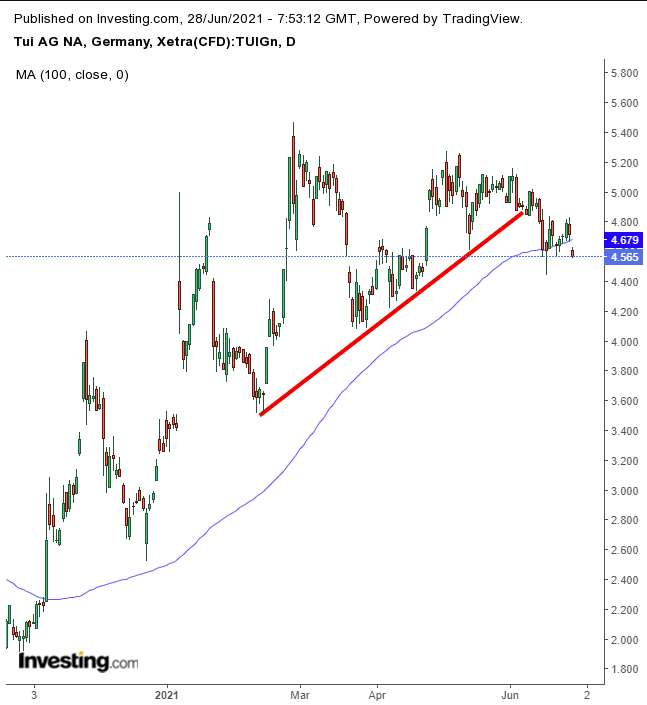
The Hanover-based firm may have completed an upsloping H&S top, followed by a fall below its 100 DMA, for the first time since crossing over it on Nov. 9.
UK-based discount airline EasyJet (LON:EZJ) also declined, -2.2%.
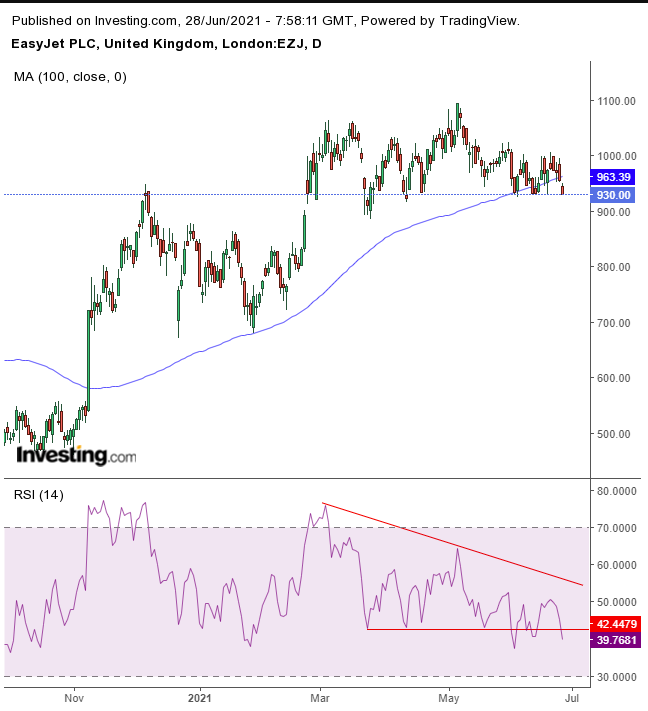
The low-cost British airline firm may be forming a H&S top, while—like TUI—it crossed below the 100 DMA after climbing above it on Nov. 9. The RSI has provided a negative divergence, falling while the price climbed from May 3 to May 7, suggesting the stock will top out.
On Monday, weekly trading started with a cautious tone in Asia, after the number of COVID cases in the region escalated over the weekend, leaving stocks in a holding pattern till the next catalyst, ahead of a slew of data from the US this coming week. Japan's Nikkei 225, China's Shanghai Composite, South Korea's KOSPI and Hong Kong's Hang Seng all closed marginally lower this morning.
Yields, including for the 10-year benchmark Treasury note, were lower for the day, along with the risk-on appetite.
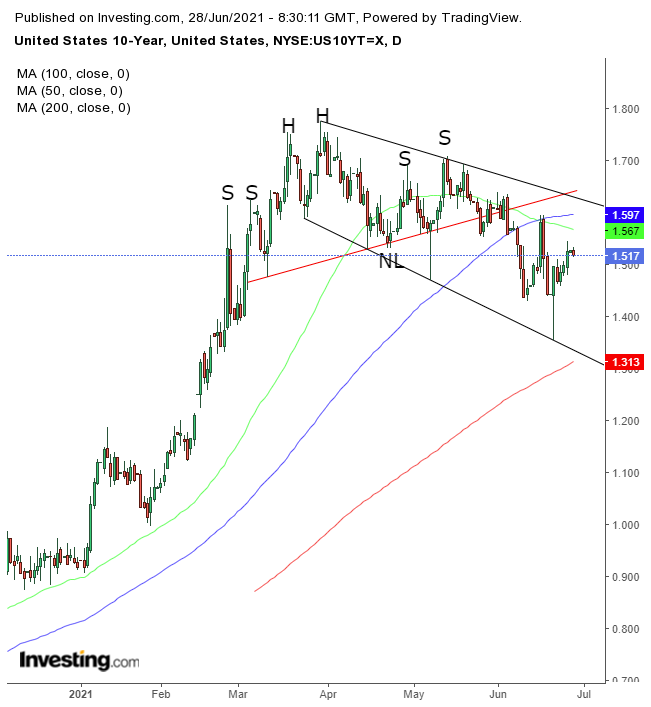
Rates have been falling since the Mar. 30 peak. Having completed a H&S top, they are now extending the downtrend within a falling channel. The 50 DMA has already crossed below the 100 DMA, but the 200 DMA, supporting the channel, will be the next real test.
If yields turn around, it could pull cash out of the stock market, attracting investors looking for higher yields and the security Treasuries provide. For now, though, investors seem to be focusing on the economic rebound.
The dollar slipped within a range, wavering for a fifth day, supported by the 100 DMA.
Gold tested the bottom of a rising channel, bearish after the preceding near-7.5% plunge within six sessions.
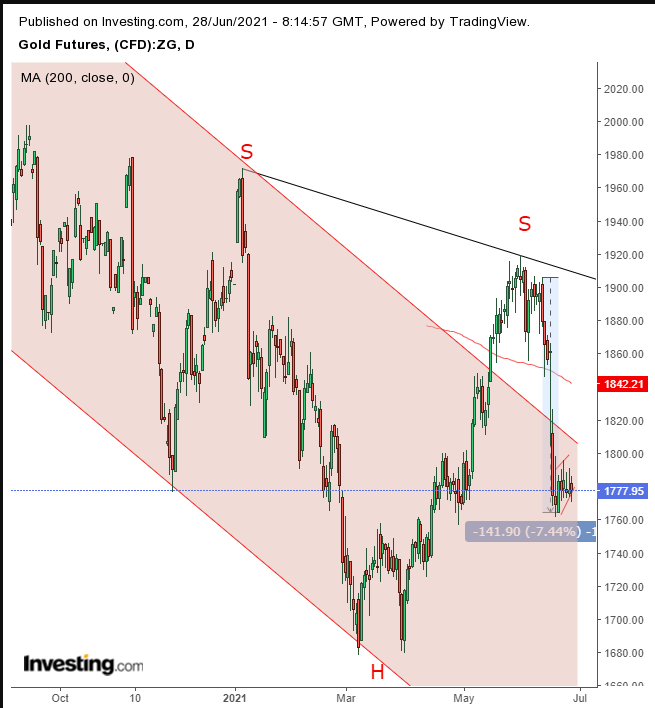
This suggests a resumption of the falling channel, rather than the completion of an H&S bottom.
Bitcoin pushed past the $35,000 level for the first time in over a week.
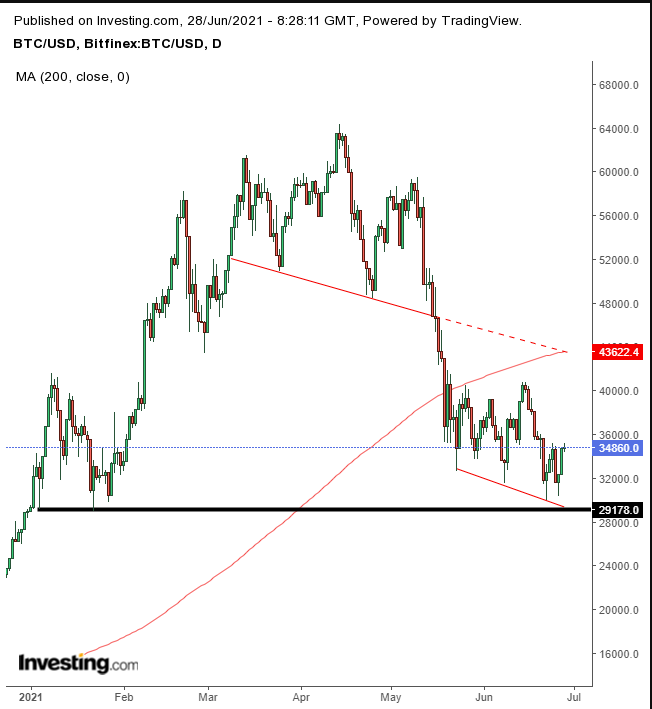
However, the cryptocurrency's moves are developing into a H&S continuation pattern, whose neckline meets with the $29,000 major support. Note, the 200 DMA is curving downward after meeting the extended H&S neckline completed on May 15, suggesting the trend could be headed lower.
Oil found resistance at the $74 level, near the 2018 highs, ahead of the July OPEC+ Meeting.
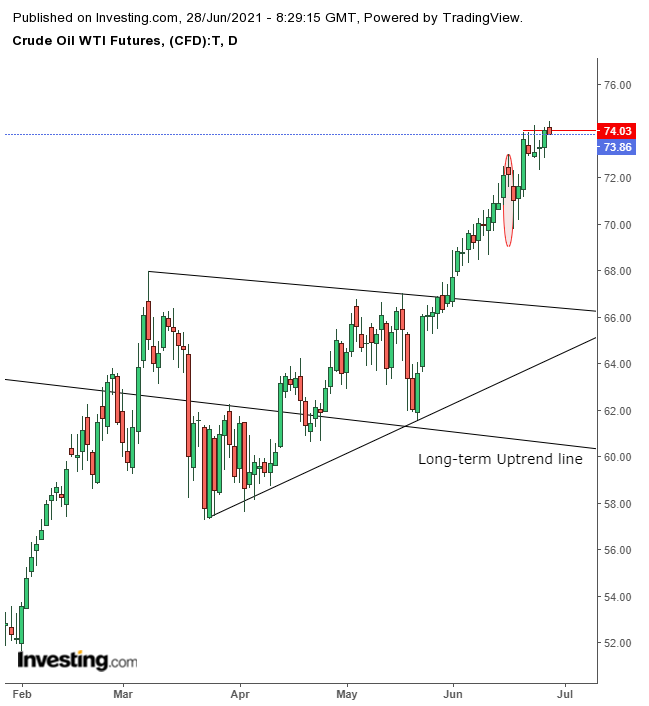
The price of WTI has found resistance at this level for the past six sessions—matching gold’s recent selloff—after having blown out an Evening Star (circled). Traders are waiting for a catalyst, to know whether crude will fall back toward its bullish triangle or take out the 2018 highs before reaching 2014 levels.
